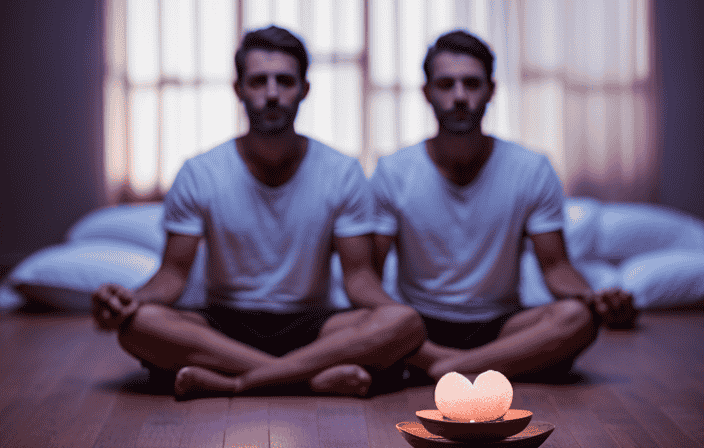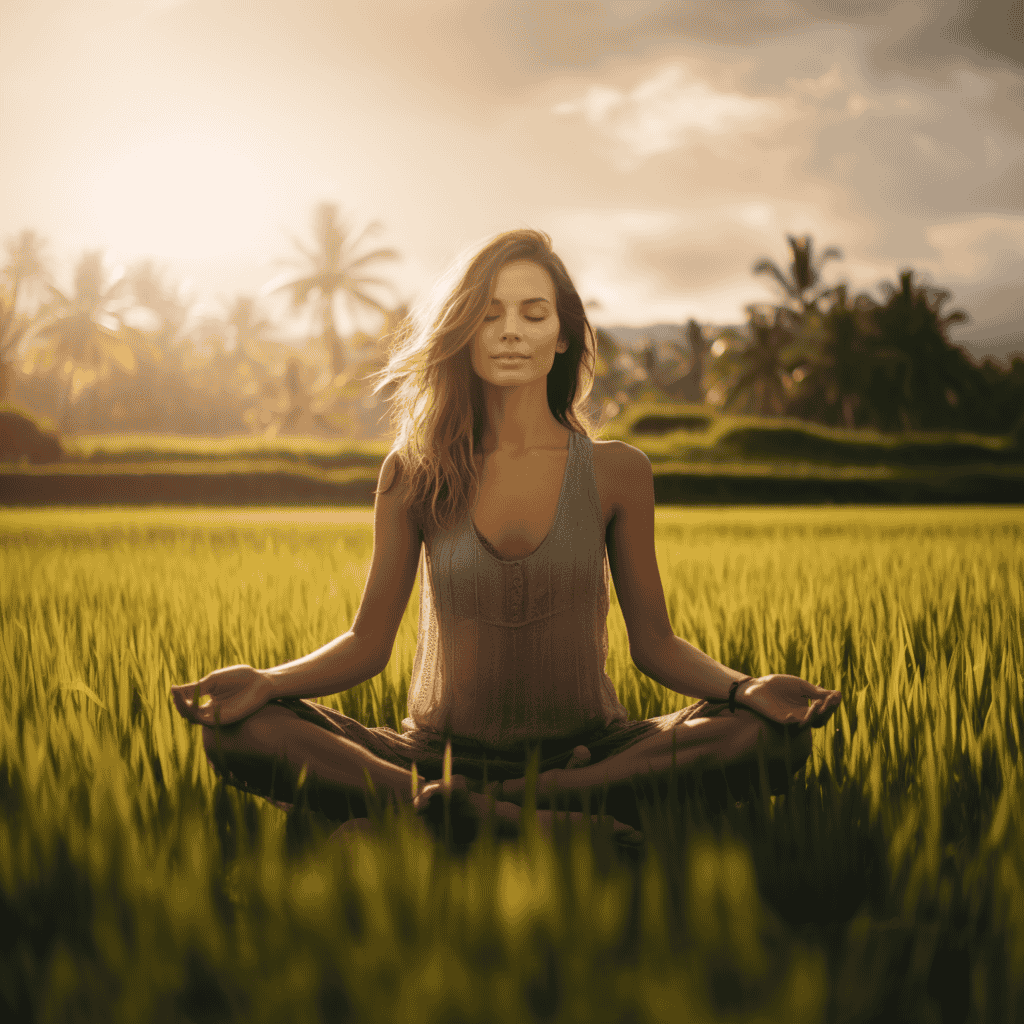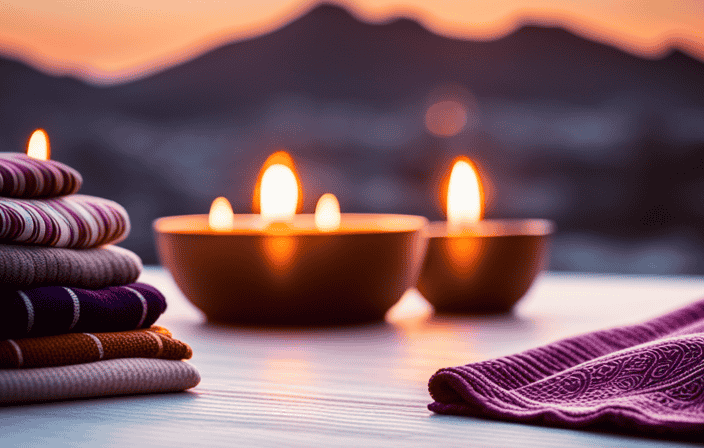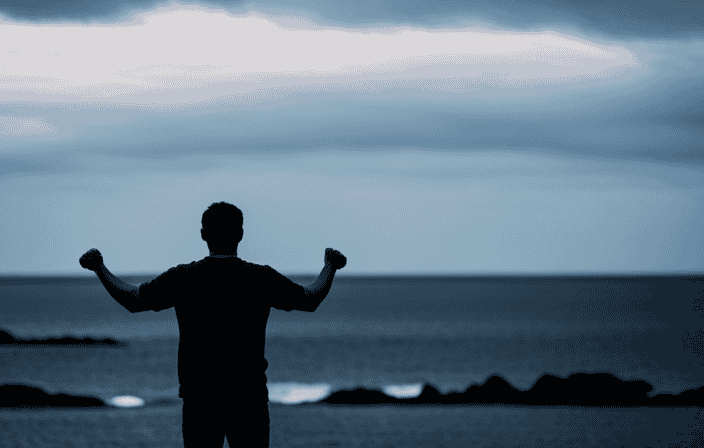When deciding on the best meditation position, there are a couple of important choices to consider: sitting on the floor or lying in bed. The decision should be based on your personal goals and preferences.
Do you want to feel grounded or comfortable? Do you want to be more alert or calm? In this article, I will guide you through the options and help you find the posture that suits you best.
Whether you’re a beginner or a seasoned practitioner, finding the right meditation posture can enhance your practice and deepen your sense of presence and awareness.
Key Takeaways
- The choice between the floor and bed for meditation depends on goals and preferences, with the floor fostering grounding and the bed offering comfort and ease.
- Sitting meditation encourages alertness, while lying meditation is great for calming practices. The choice between the two depends on the meditation style and comfort level.
- The duration of bed meditation varies from person to person, starting with a few minutes and gradually increasing based on comfort and goals.
- While meditation generally has positive effects on mental and physical health, some individuals may experience mild discomfort, which usually subsides with practice.
Floor or Bed?
I prefer the floor for meditation because it fosters grounding, while the bed offers comfort and ease.
When meditating on the floor, you are directly in contact with the earth, which can help you feel more connected and grounded. This can be especially beneficial if you are looking to cultivate a sense of stability and rootedness during your practice.
On the other hand, the bed provides a soft and cozy surface, allowing you to relax and sink into a state of comfort. This can be helpful if you are seeking a more relaxed and gentle meditation experience. However, it’s important to note that the bed may also make you more prone to falling asleep or losing focus.
Ultimately, choosing between the floor and the bed depends on your personal goals and preferences.
Sitting or Lying?
For calming practices, lying down is a great option. It allows the body to fully relax and release any tension or stress. When we lie down, our muscles can fully let go, and we can sink into a deep state of relaxation. Lying down also allows for a sense of comfort and ease, which can be beneficial when practicing mindfulness or meditation.
On the other hand, sitting has its own benefits. Sitting encourages alertness and helps keep the mind focused and engaged. It promotes a sense of stability and grounding, which can be helpful for practices that require concentration and clarity.
Ultimately, the choice between sitting and lying depends on your meditation style and personal comfort. Experiment with both postures and see which one best supports your practice.
Duration and Effects
The duration of meditation can vary from person to person, so it’s important to start with a few minutes and gradually increase the time based on comfort and goals.
Longer meditation sessions have benefits that can deepen your practice and enhance mindfulness levels. As you extend the duration of your meditation, you allow yourself more time to settle into a state of calm and relaxation. This extended period allows for a deeper exploration of your thoughts, emotions, and sensations, promoting self-awareness and a heightened sense of presence.
Additionally, longer meditation sessions provide an opportunity for the mind to quiet down and for stress to release, leading to a greater sense of peace and well-being. Remember to listen to your body and adjust the duration of your meditation based on what feels right for you.
Timing and Sleepiness
When meditating, it’s important to consider the timing and potential sleepiness that may occur. Here are three important things to keep in mind:
-
Meditating at night: Meditating at night is perfectly fine for most people. However, some individuals may experience sleepiness during this time. If you find yourself feeling drowsy, try adjusting your meditation schedule to a time when you are more alert and focused.
-
Dealing with drowsiness: Feeling drowsy is common, especially when meditating in a lying down position. To stay alert, you can try practicing meditation in a sitting or walking posture. Experiment with different meditation postures to find what works best for you and helps you maintain a sense of wakefulness during your practice.
-
Experiment with different techniques: If you find yourself consistently feeling sleepy during meditation, try experimenting with different techniques to help keep your mind engaged and focused. This could include focusing on your breath, using a mantra or visualization, or incorporating gentle movements into your practice.
Remember, the key is to find what works best for you and allows you to stay present and aware during your meditation practice, regardless of the timing or any sleepiness that may arise.
Practicing Correctly
To practice meditation correctly, I focus on my breath or chosen object, observe my thoughts without judgment, and cultivate a sense of presence and awareness. The benefits of practicing meditation with the right posture are numerous. It allows for proper alignment of the body, which promotes relaxation and reduces the risk of discomfort or pain. Sitting with a straight back helps to maintain alertness and prevents drowsiness. By finding a comfortable position, whether it’s on the floor or on a bed, I can create a supportive environment for my practice. To stay focused during meditation, I find it helpful to create a designated space free from distractions. I also experiment with different techniques, such as counting my breaths or using a mantra, to anchor my attention. By consistently practicing meditation with proper posture and focus, I can experience the full range of benefits it has to offer.
| Benefits of Proper Posture | How to Stay Focused During Meditation |
|---|---|
| Promotes relaxation | Create a designated meditation space free from distractions |
| Reduces discomfort or pain | Experiment with different techniques, such as counting breaths or using a mantra |
| Maintains alertness | Anchor attention to a chosen object or focal point |
Experiences and After-effects
During meditation, I have experienced a sense of profound stillness and inner peace. It’s a remarkable feeling that brings me closer to the present moment.
Along with this stillness, I also feel a heightened connection to my surroundings. It’s as if my awareness expands, allowing me to see things with greater clarity and insight. Time seems to slow down, and I become more attuned to the subtle nuances of my thoughts and emotions.
However, after a deep meditation session, I sometimes feel weak. This is because meditation induces a state of deep relaxation, which can leave me feeling physically and mentally drained. To counteract this, I make sure to transition back to my daily activities slowly, nourish my body with water and nutrients, and engage in gentle movements or stretching.
Rest and rejuvenation are also crucial during this time.
Meditating with Eyes Open
I find it interesting to meditate with my eyes open as it allows me to maintain a relaxed and unfocused gaze. When I meditate with my eyes open, I have noticed a few benefits:
- Increased focus: By softly gazing at a fixed point, I am able to maintain a steady focus during my meditation practice. This helps me stay present and attentive.
- Heightened awareness: Keeping my eyes open allows me to be more aware of my surroundings while still maintaining a sense of inward focus. It helps me stay connected to the present moment.
- Expanded perception: Meditating with my eyes open gives me a broader perspective and a sense of spaciousness. It allows me to observe external stimuli without getting caught up in them.
To maintain focus while meditating with my eyes open, I have found a few techniques helpful:
- Soft gaze: I relax my eye muscles and maintain a gentle, unfocused gaze on a fixed point. This helps me avoid getting too absorbed in any particular object.
- Mindful awareness: I bring my attention back to my breath or chosen object whenever my mind starts to wander. This helps me stay centered and focused.
- Experimentation: I try different techniques and find what works best for me. Sometimes I may adjust my gaze or explore different focal points to enhance my meditation experience.
Overall, meditating with my eyes open has been a valuable practice for me, allowing me to cultivate a sense of presence and awareness in a unique way.
When it comes to meditating, finding the right posture that works for your body is essential. In my previous discussion on meditating with eyes open, I highlighted the various techniques and benefits of this practice.
Now, let’s explore the benefits of meditation lying down versus sitting up, and how to find the right meditation posture for your body.
Meditating lying down can be particularly beneficial for calming practices. It allows for deep relaxation and can be helpful for individuals experiencing discomfort or pain while sitting. On the other hand, sitting up encourages alertness and is great for practices that require focus and concentration.
To find the right meditation posture for your body, it’s important to consider your goals and preferences. If you’re looking to cultivate a sense of calm and relaxation, lying down may be your best option. However, if you’re aiming for increased focus and clarity, sitting up might be more suitable.
Experiment with different postures and listen to your body to determine what works best for you. Remember, there is no right or wrong way to meditate, so find what feels most comfortable and supportive for your practice.
Frequently Asked Questions
Can I meditate on a couch or in a chair instead of on the floor or bed?
Yes, you can meditate on a couch or in a chair instead of on the floor or bed. While sitting offers more alertness, lying down is great for calming practices. Choose a posture that suits your comfort and meditation style.
Is it better to meditate in the morning or at night?
Meditating in the morning is like watching the sunrise, energizing and setting a positive tone for the day. Evening meditation offers relaxation and helps unwind. Both have benefits – choose based on your goals and schedule.
How long does it take to see the effects of meditation?
It varies from person to person, but the effects of meditation can typically be seen within a few weeks of consistent practice. Meditation benefits include improved focus, reduced stress, and enhanced overall well-being.
Can I meditate while lying down in bed before sleep?
Yes, you can meditate while lying down in bed before sleep. It has several benefits, including relaxation, stress reduction, and improved sleep quality. Lying down allows for a calming practice, making it a great option for bedtime meditation.
Can I meditate in any position, such as standing or walking?
Yes, you can meditate in any position, like standing or walking. Standing meditation promotes stability and grounding, while walking meditation encourages mindfulness in motion. Experiment with different postures to find what suits you best.
Conclusion
In conclusion, choosing the right meditation posture is a personal decision that depends on your goals and preferences. Whether you choose to sit on the floor or lie on a bed, or sit upright or lie down, it’s important to find a posture that promotes the desired effects of your meditation practice.
Remember, there is no right or wrong way to meditate, as long as you focus on your breath or chosen object, observe your thoughts without judgment, and cultivate presence and awareness.
So, why not explore different postures and discover what works best for you?










